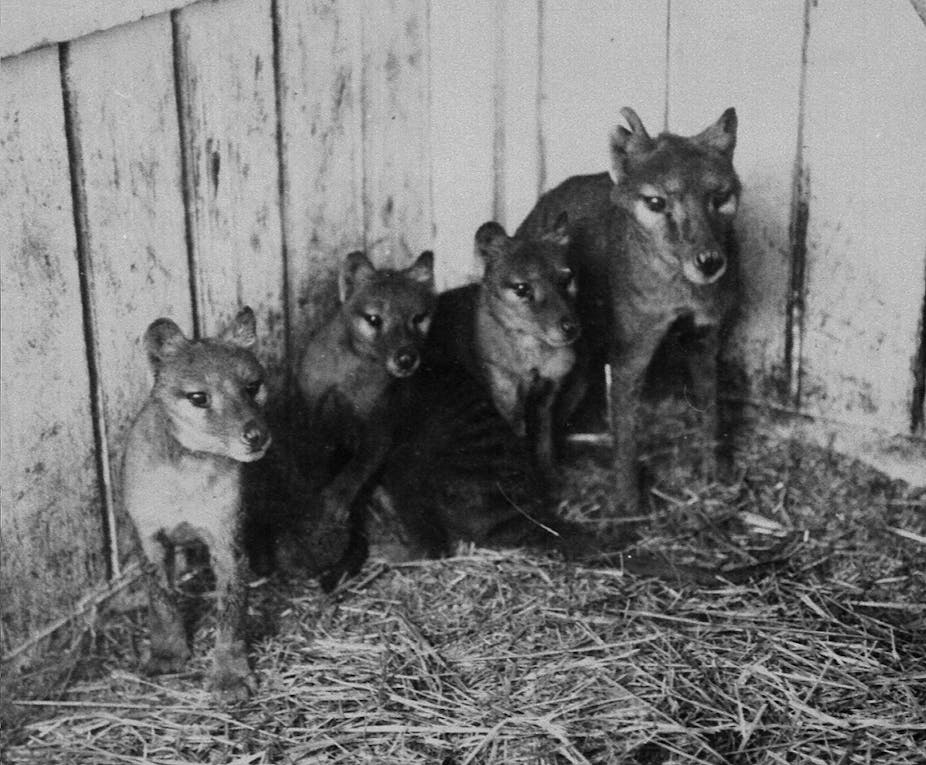We have all heard at some time or another that Australia has the worst record of mammal extinctions in history, with many of our unique and vulnerable critters succumbing only years after the first Europeans arrived here. However, the island of Tasmania stands out from this record: it has not lost a single mammal species since the demise of the Tasmanian tiger, or thylacine.
The Ireland-sized island has long acted as a refuge for its platypuses, echidnas, devils, quolls, bandicoots, bettongs, potoroos and pademelons. Yet with current and future stresses - such as the introduction of the European fox, disease, urbanisation and climate change - it is critical that those charged with the fauna’s protection continue to monitor their genetic health.
The Tasmanian devil currently receives the lion’s share of conservation attention given its precipitous population decline as a result of the devil facial tumour disease (DFTD).
It is absolutely clear now that the devil’s failure to resist this transmissible cancer is linked to its genetic history. Scientists have demonstrated a lack of genetic variation in this species using three different measures. They have compared the complete nuclear and mitochondrial genomes between individuals and counted the total number of DNA differences. They have looked at the number of disease recognition genes known as MHC (major histocompatability complex). And they have monitored the distribution of repetitive DNA elements known as microsatellites. Importantly, each of these different measures indicates low genetic diversity.

Limited genetic variation within populations may not lead to easily observable problems such as DFTD. The cheetah is a classic example of a highly successful species with lower than average genetic diversity. However, any conservation or population biologist would tell you that low diversity is undesirable because it restricts the capacity of species to respond to local stresses (such as a new illness).
In a study published in PLoS ONE today, we used ancient DNA techniques to demonstrate that the Tasmanian tiger population was also genetically poor prior to its extinction. We compared gene coding and non-coding portions of mitochondrial DNA to estimate population diversity from museum specimens collected between 102 and 159 years ago. Approximately half of our samples were collected before the bounty of 1888 and half afterwards.
Within the gene non-coding DNA, which normally shows about 1.7% variation in mammals and can be as high as 3.5% in some dog populations, there was only 0.5% variability between individual thylacines. Furthermore, our estimate of gene coding diversity was about the same as that found in today’s devil population.
Together, these studies point to a general lack of genetic wealth within Tasmania’s two largest carnivorous marsupials that may originate from the separation of the island from Australia approximately 10-13 thousand years ago at a time when the climate also became warmer. The critically endangered mountain pygmy possum is an example of a mainland species that has been affected both by isolation and changing climate.

Before the separation of Tasmania from Australia, thylacines and devils roamed over the entire continent. One pattern that is identified consistently in island populations, or populations that began with a small number of founder individuals, is that they possess very limited genetic diversity. The available pool from which they can draw unique traits has been instantly reduced.
This pattern may not end with the Tasmanian tiger and devil. Tasmania’s other precious fauna may have also inherited a paucity of unique genes that leave them vulnerable to the combined environmental stresses mentioned above.
To clarify the genetic position of many of Tasmania’s other mammals we should be measuring indices of population health relative to mainland Australian populations. Our study in PLoS ONE demonstrates that this is even possible from old specimens, of which there are numerous samples sitting in our museums.
Studies like these are necessary in order to extinction-proof Tasmania’s fauna by describing current levels of gene variation and promoting management strategies that maximise out-breeding and genetic diversity.

